It would appear that many have some type of images detailing the massive flooding and damage caused by the recent storms, and although it is not entirely a fire service issue, we would welcome additional images or videos to share. Here, from Larry Shapiro, are some images and a video illustrating a small area of the northwest suburbs including parts of Prospect Heights, Mount Prospect, Arlington Heights and Palatine.
Ever drive on Milwaukee Avenue under Palatine Road and wonder about those big green gates along the side of the road? … They were deployed for the first time on Thursday afternoon in anticipation of the Des Plaines River cresting in the area.
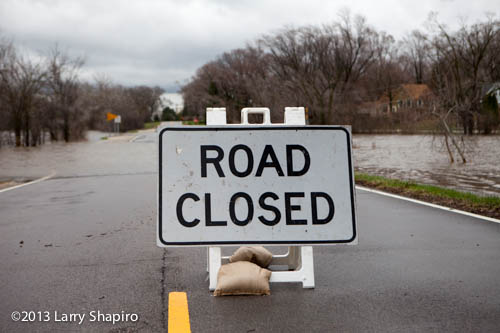
A section of Willow Road in Prospect Heights is closed to traffic. Larry Shapiro photo
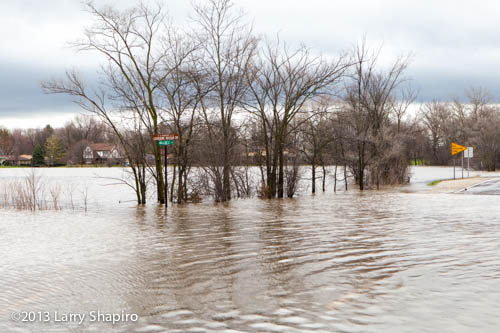
Hillcrest Drive at Willow Road in Prospect Heights. Larry Shapiro photo
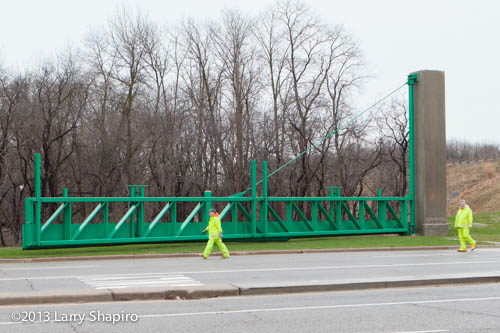
Closing the Army Corp of Engineers flood gates on Milwaukee Avenue at Palatine Road. Larry Shapiro photo
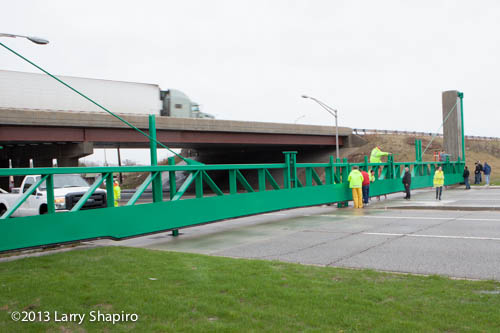
The flood relief gates are locked into place across Milwaukee Avenue. Larry Shapiro photo
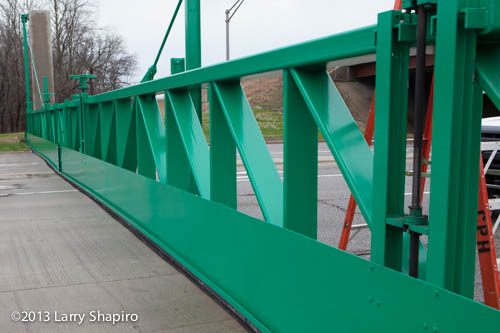
When the bottom plates on the gates were lowered, they create a seal along the pavement. Larry Shapiro photo

Pump setup to remove water from a housing complex along River Road. Larry Shapiro photo
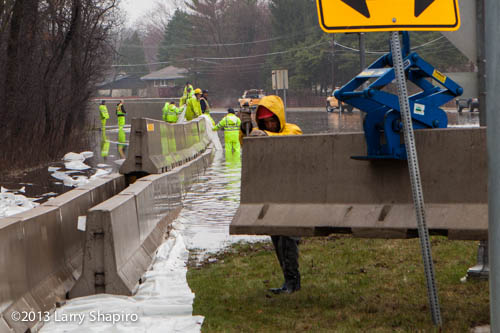
Stacking jersey barriers to create a barrier along a flooded section of River Road in Mount Prospect. Larry Shapiro photo
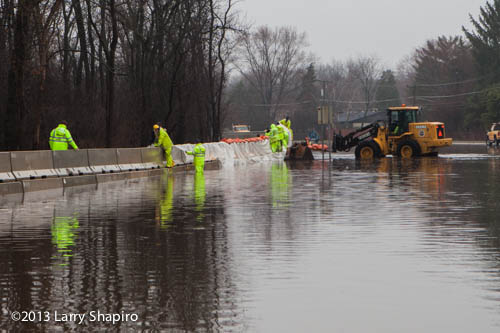
The jersey barriers are wrapped with Visqueen and weighted down with sand bags. Larry Shapiro photo
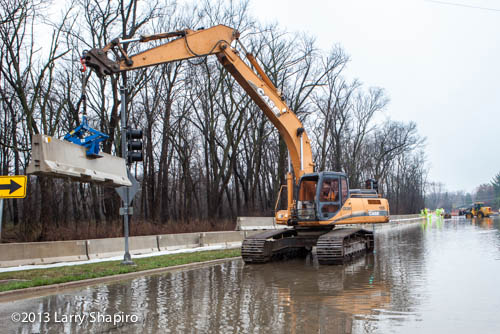
Crews build a temporary levee along River Road in Mount Prospect. Larry Shapiro photo
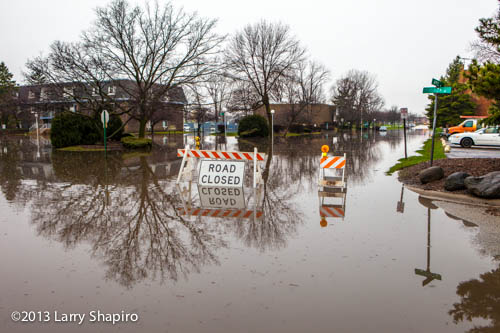
Apple Drive and Plaza Drive in Prospect Heights. Larry Shapiro photo

Twin Lakes golf course in Palatine along Route 53. Larry Shapiro photo
More images showing the jersey barrier levee construction and the flood gate deployment can be viewed HERE.
Army Corp of Engineers projects for the Des Plaines River:
|
Authority: Water Resources Development Act 1999 (Public Law 106-53) Project Decription: The Des Plaines River has a long history of flooding that has caused significant economic losses. The maximum flood of record occurred in September 1986 with an estimated $35 million in damage to 10,000 dwellings and 263 business and industrial sites. More than 15,000 residents were evacuated from the flooded area and seven lives were lost. Severe impacts to transportation networks were also identified in this area of 33 municipalities along 67 miles of river in two counties. The flood damage reduction project consists of six structural elements: two levees, two expansions of existing reservoirs, one lateral storage area and one dam modification. The levee projects include a flood warning system. Work involves construction of the Mount Prospect/Prospect Heights Levee, also known as Levee 37; the Rand Park Levee, also known as Levee 50; the Buffalo Creek Reservoir expansion; the Big Bend Lake expansion; the Van Patten Woods lateral storage area; and the North Fork Mill Creek dam modification. Costs:
Current Status: Construction of Levee 37 is substantially complete as of April 15, 2012. The regulated 600′ gap will be closed by the Levee 37 Gaps and Closures contract once MWRDGC completes construction of the compensatory storage facility at Heritage Park in Wheeling, IL. This is currently scheduled to happen at the end of 2013 or beginning of 2014. Chicago District is currently working on finishing the plans for the Gaps and Closures contract while also working on plans and specifications for Van Patten Woods Lateral Storage and Big Bend lake expansion. Right now the main work is in coordinating with the respective land owners, Forest Preserve District of Cook County and Lake County Forest Preserve District. |
Authority:
Water Resources Development Act 1999, Section 419
Project Description:
The Des Plaines River flows from southeast Wisconsin to northeast Illinois. It is 67 miles long, flowing through 33 municipalities. There is frequent flooding. In 1986, the flood of record occurred and affected 15,000 residents, their dwellings and businesses, as well as the area’s transportation network. This study expands the area of concern from the mainstem in Illinois to include the entire Upper Des Plaines watershed comprised of 15 tributaries in Illinois and Wisconsin. In addition to flood risk management, the purpose of this study also includes ecosystem restoration, water quality, and recreation features. There are over 43 municipalities in the watershed that contend with flood damages from the Des Plaines River and tributaries. Recent flood events include May 2004, August 2007, September 2008 and December 2008, which resulted in significant flood damages and disaster declarations. The Phase II study has three primary objectives: further reduction of main stem flooding; reduction of tributary flooding; and environmental restoration of degraded ecosystems within the basin. The study will consider sites located within tributary watersheds and along the main stem for both Flood Risk Management (FRM) and Ecosystem Restoration (ER) potential. The effects of FRM sites within tributary watersheds on main stem flooding will be evaluated.
Costs:
| Total Project Cost: | $ 12,944,000 |
| Federal Cost: | $ 6,713,000 |
| Non-Federal Cost: | $ 6,231,000 |
Current Status:
An updated version of the Alternative Formulation Briefing Document was submitted for review on December 14, 2012. This version resolves some policy issues and combines the document into one volume rather than being split into 5 separate volumes. This new version should complete review in February, which should lead to a public release of the document in the near future.
Please check back later for public release of the feasibility study.






























#1 by Joe on April 21, 2015 - 3:00 PM
I’m not the webmaster nor the photographer, but you’d likely have the best luck contacting Larry Shapiro directly through his website if you’re interested in using one of his photographs. His site is: http://shapirophotography.net and it contains his contact information.
#2 by Amanda on April 21, 2015 - 2:19 PM
Would it be possible to use a photo from this post in an e-learning course with appropriate photo credit.
Thank you.